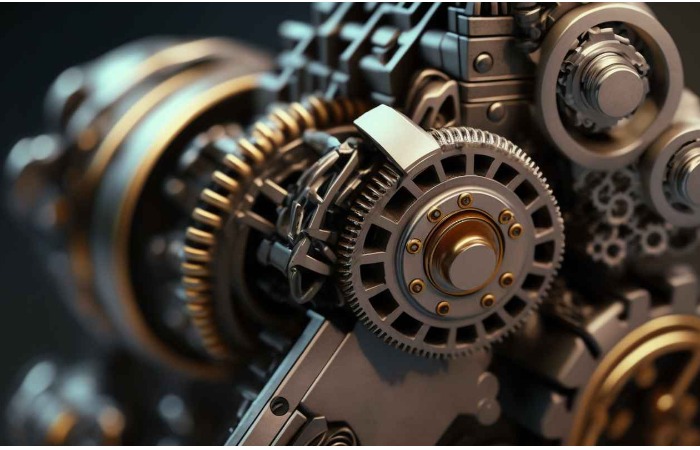
India’s Auto Component Industry Grows 8.2% to USD 80.2 Billion
India’s auto component industry is entering a defining chapter, one that blends global challenges with domestic momentum. As trade tensions reshape supply chains and rare earth metal dependencies test manufacturing resilience, the industry is finding its strength in innovation, localisation, and digital transformation. Backed by record vehicle production and strong policy support, India’s automotive component ecosystem is steadily evolving from being a cost-driven supplier to a technology-led manufacturing hub. Capturing this transformation, Rubix Data Sciences, a risk management and monitoring company firm has released its October 2025 Industry Insights Report on Automotive Components. The report analyses how the industry is navigating disruption and emerging as a key pillar of India’s manufacturing growth story.
According to the report, India’s auto component industry turnover rose 8.2 per cent year-on-year to $80.2 billion in FY2025, supported by a 9 per cent rise in vehicle production to 31 million units. The industry’s outlook remains strong, with the NITI Aayog projecting turnover to reach $145 billion by 2030, positioning India as a key player in global automotive supply chains. India’s share in globally traded components, currently around 3 per cent, is expected to rise to 8per cent by 2030 and exports are forecast to triple to $60 billion. This growth trajectory is likely to be driven by domestic localisation, EV expansion, and precision manufacturing upgrades supported by policy incentives. A lot also hinges on the US tariff scenario.
In FY2024, India’s auto component trade balance turned positive for the first time with a thin margin, but in FY2025, it was wider. Exports reached USD 22.9 billion, surpassing imports of $22.4 billion and resulting in a USD 0.5 billion trade surplus. Exports and imports have grown at 15 per cent and 13 per cent CAGR, respectively, since FY2021, reflecting the industry’s manufacturing strength and competitiveness in global markets. While the report cautions that US tariffs of up to 50 per cent on imported components could affect nearly 20 per cent of India’s exports to the US, it also highlights signs of resilience. The US currently accounts for 27 per cent of India’s outbound shipment, but the industry is offsetting potential risks through a stronger domestic manufacturing base, deeper ties with Europe and ASEAN, and a growing focus on higher-value products.
However, the report highlights a critical supply chain vulnerability: India’s dependence on China for rare earth magnets, which are a key component in EVs and hybrid vehicles. India imported $221 million worth of rare earth magnets in FY2025, with over 80 per cent sourced from China. Beijing’s new export licensing rules and end-user certifications pose significant risks to India’s EV supply chain. In response, the Indian Government plans to triple incentives to Rs 70 billion to build domestic rare earth metals capacity and diversify sourcing from Australia, Vietnam, and South Africa. These steps mark a decisive shift toward strategic self-reliance and reduced import dependence.
Beyond trade and manufacturing, the Rubix report captures the industry’s accelerating digital transformation. The Software-Defined Vehicle (SDV) market in India is projected to grow from $18.2 billion in 2025 to $69.5 billion by 2031, a 24.9 per cent CAGR. Under the Digital Personal Data Protection (DPDP) Rules 2025, OEMs and component manufacturers will need to adopt stringent data protection and cybersecurity frameworks, reshaping how the industry manages connected vehicle ecosystems. This transformation is redefining the role of component makers from hardware suppliers to integrated technology partners in mobility.
On the corporate front, the report tracks strategic expansions and investments across key players such as Bharat Forge (AAM India acquisition), Bosch, Gabriel India, Exide Industries, Uno Minda, Minda Corporation, and Greaves Cotton, all of whom are ramping up capacity, localisation, and EV-focused innovation. Collectively, these moves signal the industry’s shift from cost-efficient supply to technology-led growth and global integration.
“India’s auto component industry is moving beyond scale to substance,” said Mohan Ramaswamy, Co-founder and CEO of Rubix Data Sciences. “Even though global trade challenges continue, the industry’s strong domestic demand, growing localisation, and increasing digital readiness are laying a solid foundation for long-term competitiveness. The real opportunity now lies in how companies strengthen their supply chains, invest in innovation, and use risk intelligence to guide their global strategies,” he added.
As global markets evolve, the Rubix report emphasises that India’s auto component ecosystem is no longer defined solely by cost competitiveness but by its ability to innovate, localise, and lead in emerging technologies. With strong government policy support, rising export potential, and an expanding digital mobility landscape, India is well positioned to become a key driver of global automotive transformation in the decade ahead.


 +91-22-24193000
+91-22-24193000 Subscriber@ASAPPinfoGlobal.com
Subscriber@ASAPPinfoGlobal.com